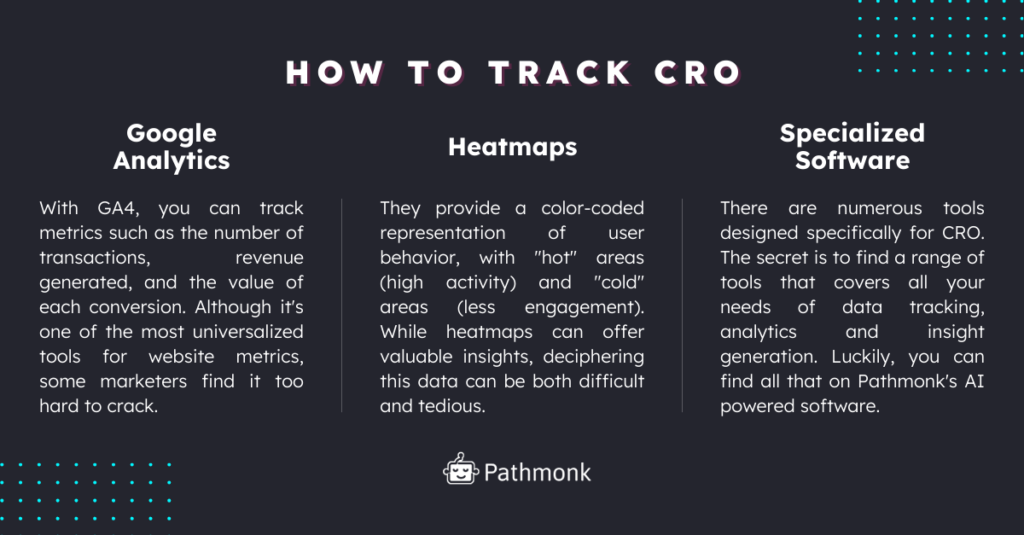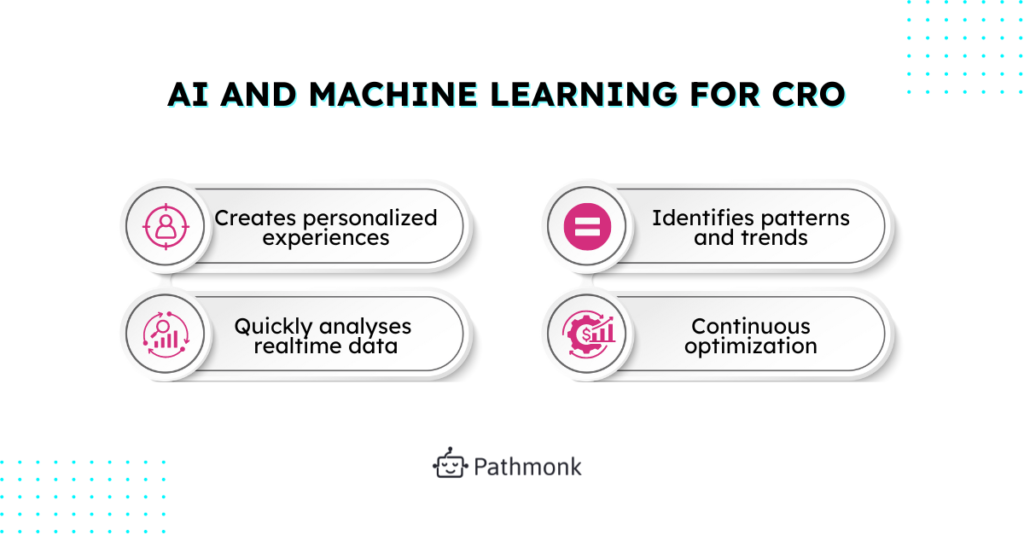
Let’s talk about something that can genuinely transform your business’s digital presence—CRO. If you’re in the marketing world, you’ve probably heard about Conversion Rate Optimization (CRO), but do you really know what it means and why it’s crucial for your business? CRO is a vital component that can significantly impact your company’s success online.
Imagine you’ve invested heavily in your website. You’ve got excellent content, sleek design, and a solid SEO strategy. You’re attracting traffic, but for some reason, those visitors aren’t converting into leads or customers. It’s frustrating to see potential sales slipping through your fingers. This is where CRO comes in.
According to a report by Econsultancy (https://econsultancy.com/), companies that prioritize CRO are twice as likely to see a significant increase in sales. That’s a compelling reason to pay attention to CRO, don’t you think?
In this article, we’ll explore what CRO means, why it’s essential for your business, how to effectively track it, and innovative ways to optimize your conversion rates.
Table of Contents
What Does CRO Mean?
CRO, or Conversion Rate Optimization, is the process of improving your website to increase the percentage of visitors who complete a desired action. This could be anything from filling out a form, signing up for a newsletter, or making a purchase. Think of it as getting more bang for your buck. You’ve already got the visitors; CRO helps you turn them into leads and customers.
In simple terms, CRO is like setting up a lemonade stand. You might have a lot of people walking by (website visitors), but what you really want is for them to stop, take a sip, and buy a cup. CRO helps you figure out why people are just walking by and how you can get them to stop and buy that lemonade.
CRO involves understanding the user journey and finding points where visitors might drop off. It’s about tweaking your website in ways that make it more appealing and user-friendly, ensuring that visitors find exactly what they’re looking for with minimal effort. It’s like having a friendly neighbor point out where the best lemons are in your lemonade stand.
From a more technical standpoint, CRO involves a combination of tools and strategies to analyze user behavior and improve the elements on your site that influence conversion rates. This might include testing different versions of a webpage, analyzing heatmaps to see where users click, and optimizing the user experience to reduce friction in the conversion process.
CRO also requires a deep understanding of user psychology and behavior. For instance, the placement of a call-to-action (CTA) button, the color scheme of your site, or even the wording used can significantly impact conversion rates. Advanced CRO strategies might involve complex algorithms and machine learning to predict user behavior and optimize accordingly. It’s a bit like turning your lemonade stand into a state-of-the-art beverage kiosk that anticipates when customers will be thirsty.
Why You Should Track CRO on Your Website
When it comes to your website, CRO is one of the BIG metrics you need to keep an eye on.
because it directly impacts your bottom line. It tells you how well your website is performing in terms of converting visitors into leads or customers. Higher conversion rates mean more sales, more sign-ups, and ultimately, more revenue.
By focusing on CRO, you can make the most of your existing traffic, reducing the need to spend more on acquiring new visitors. This makes your marketing efforts more efficient and cost-effective. Additionally, a high conversion rate is often indicative of a positive user experience, which can lead to higher customer satisfaction and loyalty.
How to Track CRO
Tracking CRO isn’t rocket science, but it does require some know-how and the right tools. There are several ways to measure your website’s performance and optimize your conversion rates. Here are a few to get you started:
Google Analytics
Google Analytics is a complex tool for tracking a wide range of metrics on your website, including conversion rates. It allows you to set up goals and track how visitors are behaving on your website. It’s free, and provides a huge pack of information and reports – some might even say too many!
With Google Analytics, you can track conversion-related metrics, such as the number of transactions, revenue generated, and the value of each conversion. You can also segment your audience to see how different groups of users behave on your site. Even so, it has caused heavy migraines to marketers.
Although it’s one of the most universalized tools for website metrics, some marketers might find it too hard to crack. Especially with the migration to Google Analytics 4, many professionals have found it difficult to use and personalize their own business. It offers so much information that it can even be hard to find exactly what you are looking for.
Heatmaps
Heatmaps are a popular tool for visualizing user interactions on your website, showing where users click, scroll, and hover. They provide a color-coded representation of user behavior, with “hot” areas indicating high activity and “cold” areas showing less engagement. While heatmaps can offer valuable insights into how visitors are interacting with your site, deciphering this data can be both difficult and tedious.
Using heatmaps effectively involves more than just glancing at colorful graphics. You need to meticulously review and analyze screen recordings and user sessions to understand the context behind the interactions. This can mean sifting through hours of footage, trying to piece together why users are clicking on certain elements or ignoring others. Patterns aren’t always immediately clear, and what might seem like a hot spot could be misleading without the proper context.
Moreover, interpreting heatmap data requires a deep understanding of user behavior and website design principles. These nuances make the process of analyzing heatmaps challenging and time-consuming, requiring a meticulous and often tedious approach to draw actionable conclusions.
Specialized Software
There are numerous specialized tools designed specifically for CRO. Some tools offer advanced features such as A/B testing, heatmaps, and session recordings. These tools provide deeper insights into user behavior and help you make data-driven decisions. Using different tools can give you a granular understanding of user behavior, enabling you to optimize your site more effectively.
The secret is really to find a range of tools that covers all your needs in terms of data tracking, analytics and insight generation. Luckily, you can find all that on Pathmonk’s AI powered software.
Pathmonk is a cutting-edge software designed to enhance your conversion rate optimization efforts through advanced data tracking and analytics. It tracks detailed user engagement metrics, such as scroll depth, click behavior, and time on page. By capturing this granular data, Pathmonk allows you to see exactly at what point of their journey users are dropping off. This level of detail helps you identify problem areas, optimize user journeys more effectively, and of course track your conversion rate more effectively. Check out this interactive demo.

New Ways of Optimizing Conversion Rates
Alright, let’s talk about some fresh, never-been-heard-before strategies to boost your conversion rates. If you’re tired of the same old tips, here are a few innovative ideas to try.
Interactive Content
Interactive content, such as quizzes, polls, and interactive infographics, can engage users and encourage them to take action. It’s a fun and engaging way to keep visitors on your site longer and guide them towards conversion.
Interactive content captures user attention and encourages active participation, making the experience more memorable. For example, a quiz that helps users find the perfect product based on their preferences can lead to higher engagement and conversion rates. Interactive content also provides valuable data on user preferences and behavior, which can inform your optimization efforts.
AI and Machine Learning
Leverage the power of AI and machine learning to analyze user behavior and predict future actions. AI can help you optimize your website in real-time, providing personalized experiences and improving overall conversion rates. This is one of the specialties of Pathmonk, creating personalized experiences based on the user’s stage on their buying journey.
Plus, AI can analyze vast amounts of data quickly, identifying patterns and trends that might not be apparent through manual analysis. For instance, AI can predict which users are likely to convert based on their behavior and deliver targeted offers to them. Machine learning algorithms can also continuously optimize your site by learning from user interactions and making adjustments in real-time.

Gamification
Adding elements of gamification to your website can make the user experience more enjoyable and engaging. Rewarding users for completing certain actions, such as signing up for a newsletter or making a purchase, can encourage more conversions.
Gamification involves incorporating game-like elements, such as points, badges, and leaderboards, into your website. These elements tap into users’ intrinsic motivations, making the experience more fun and rewarding. For example, you could offer points for each purchase that users can redeem for discounts or free products. Gamification can also create a sense of competition and achievement, driving users to engage more deeply with your site.
Voice Search Optimization
With the rise of voice search, optimizing your website for voice queries can help you capture a new segment of users. Ensure your content is voice-search-friendly by using natural language and long-tail keywords.
Voice search is becoming increasingly popular, and optimizing for it requires a different approach than traditional SEO. Voice queries tend to be longer and more conversational, so your content should reflect this. Use natural language and address common questions that users might ask. Additionally, ensure your site is mobile-friendly and loads quickly, as voice searches are often performed on mobile devices.
Mobile Optimization
With more people using their mobile devices to browse the internet, having a mobile-optimized website is crucial. Ensure your site is responsive, loads quickly, and offers a seamless user experience on mobile devices.
A mobile-optimized site adapts to different screen sizes and provides a smooth user experience regardless of the device. This includes easy navigation, fast loading times, and touch-friendly elements. Mobile optimization also involves minimizing pop-ups and other intrusive elements that can disrupt the user experience. Given the increasing reliance on mobile devices for browsing and shopping, ensuring your site is mobile-friendly is essential for maximizing conversions. It’s like having a lemonade stand that’s easy to spot and access, no matter where your customers are coming from.
User Feedback
Sometimes the best insights come directly from your users. Surveys, feedback forms, and usability testing can provide valuable information on what’s working and what’s not. Don’t be afraid to ask your users for their opinions—they might just tell you exactly what you need to improve.
Gathering user feedback helps you understand the pain points and preferences of your audience. For instance, if customers are complaining about the checkout process being too complicated, you can streamline it to improve conversions. User feedback can also reveal opportunities for new features or improvements that you might not have considered.
Revolutionizing CRO with AI-Powered Personalization
If you’re looking for an innovative solution to enhance your conversion rate optimization efforts, consider Pathmonk. Unlike traditional tools that rely heavily on cookies, Pathmonk Accelerate leverages advanced, cookieless data analysis to understand user behavior and optimize conversions by offering personalized micro-experiences.
Pathmonk uses AI-driven algorithms to analyze user intent and engagement in real-time. This means you can provide a seamless and relevant user journey, significantly boosting conversion rates. By adopting Pathmonk, your business offers a privacy-friendly yet highly effective way to turn visitors into loyal customers. It’s a forward-thinking solution that addresses modern data privacy concerns while maximizing your website’s conversion potential. And good news, you can experience an interactive demo right now!
Increase +180%
leads
demos
sales
bookings
from your website with AI
Get more conversions from your existing website traffic delivering personalized experiences.






